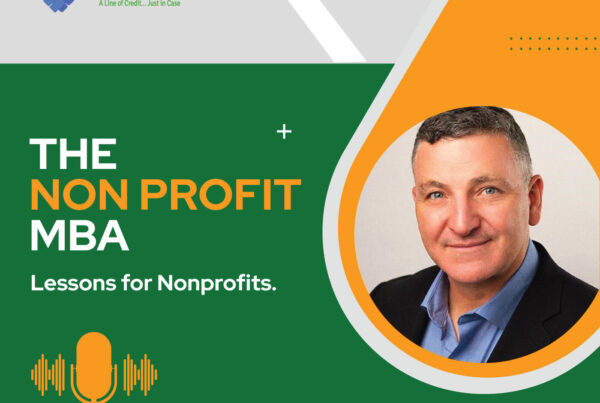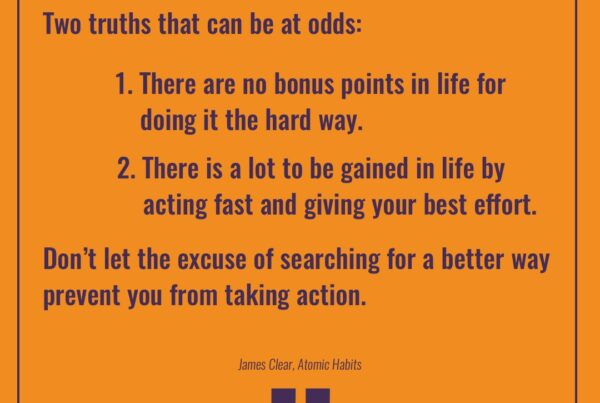Culture of philanthropy. We hear about it. Read about it. Talk about it. But what is it?
I define a culture of philanthropy as: values and actions that support and nurture fund development at a nonprofit organization.
If your organization requires outside financial support to survive and thrive – building a culture of philanthropy is necessary. What’s essential to the success of any culture is a leader who not only “gets it,” but who will continually support the effort.
I’ve recapped and provided my lens on 8 questions shared in a recent post at The Chronicle of Philanthropy [NOTE: You must be a subscriber to read the original post.]
Use these helpful questions & answers to guide you and your team to build your own culture of philanthropy (you can download an infographic PDF if you want to keep a reminder at your desk).
 1. Do we have staff leaders who believe in a culture of philanthropy?
1. Do we have staff leaders who believe in a culture of philanthropy?
It’s especially important that the executive director is committed to this process. Frankly, it’s impossible to build a strong culture without your executive leading it. According to the Evelyn and Walter Haas, Jr. Fund’s study UnderDeveloped: A National Study of Challenges Facing Nonprofit Fundraising, the executive director has to be “an instigator, a champion, and a role model to bring fundraising into the heart of the organization and keep it there.”
 2. How can we get the board to become champions of a culture of philanthropy?
2. How can we get the board to become champions of a culture of philanthropy?
Ask board members what their philanthropic – charitable giving – story is. Carve out part of every board meeting to talk about fundraising. Bring in people to help train board members in all aspects of fund development. Give board members the opportunity to interact with program staff and clients.
 3. Beyond our board and staff leaders, do we have other champions in our organization who can model and monitor our progress in developing a culture of philanthropy?
3. Beyond our board and staff leaders, do we have other champions in our organization who can model and monitor our progress in developing a culture of philanthropy?
Who are the influential people in your organization eager to move to a culture of philanthropy? They’ll help bring others along. People start believing when they actually see new behavior at work and working.
 4. Is our mission clear and easy to communicate?
4. Is our mission clear and easy to communicate?
Have a clearly articulated mission that reflects shared values. It’s just as important that everyone in your organization can communicate it your mission. Use mission moment stories to help with this.
 5. Does everyone in the organization understand philanthropy’s role in advancing the organization’s mission and values and have opportunities to participate in development activities?
5. Does everyone in the organization understand philanthropy’s role in advancing the organization’s mission and values and have opportunities to participate in development activities?
Staff members, especially, need to see how fundraising “fits” with the organization. And how fundraising is essential to their own work.
 6. Do we have a vision of what the organization would look like with a culture of philanthropy that everyone can get behind?
6. Do we have a vision of what the organization would look like with a culture of philanthropy that everyone can get behind?
Because change is personal, it is important to address our natural desire to see “what’s in it for me?” Plus staff and board members must understand how this shift will enhance your organization’s impact. Use your mission and vision to remind people of where your organization is headed on your path toward a culture of philanthropy. Especially when interest or commitment lags.
 7. How would we nurture & sustain this culture over time?
7. How would we nurture & sustain this culture over time?
Culture transformation takes time. So assess progress at regular intervals. What metrics of process will help your organization evaluate your organizational culture? How do you define desired changes? What does it look like to make those changes?
 8. Can we develop policies, procedures, and measurable goals for making the plan concrete?
8. Can we develop policies, procedures, and measurable goals for making the plan concrete?
Codifying things in writing conveys that your organization is serious and intentional about change. Your lists, measures of success and systems also provide a more formal blueprint for staff and the board.
Sharing powerful mission moment stories is one of THE most effective ways to build a culture of philanthropy. Join Lori on Wednesday, August 21, for the NEW Grant Station Webinar: Advanced Storytelling: Sharing Your Money Story.







Great article. It really is so important to make sure that the entire organization is on board with the the philanthropy goals.